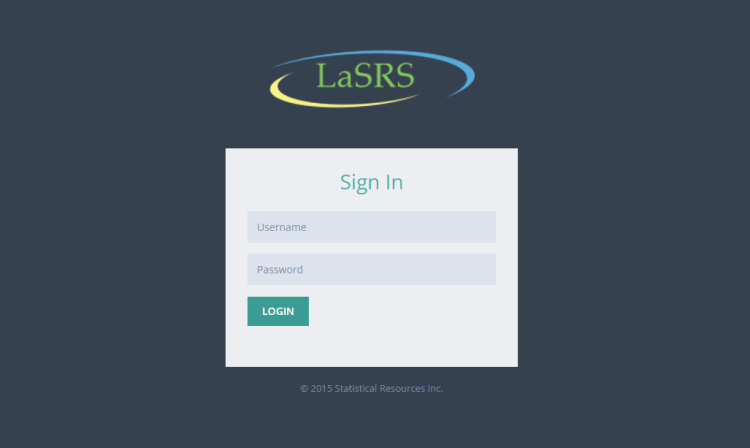In the realm of public services and administration, effective reporting and tracking are essential for maintaining transparency, accountability, and efficiency. The Louisiana Service Reporting System (LaSRS) is a critical tool designed to streamline the reporting and management of various public services in Louisiana. This detailed article will provide an in-depth look at LaSRS, its functionalities, benefits, and how it contributes to the efficiency of service delivery in the state.
What is LaSRS?
LaSRS, or the Louisiana Service Reporting System, is a comprehensive digital platform developed to facilitate the reporting and management of public services and programs in Louisiana. It is a centralized system that allows various state agencies and service providers to report, track, and manage service delivery efficiently.
Objectives of LaSRS
- Enhance Transparency: By providing a unified platform for service reporting, LaSRS aims to improve transparency in how public services are delivered and managed.
- Improve Efficiency: The system is designed to streamline processes and reduce bureaucratic hurdles, thereby enhancing operational efficiency.
- Facilitate Data Management: LaSRS helps in collecting, analyzing, and managing data related to service delivery, aiding in better decision-making and resource allocation.
Key Features of LaSRS
LaSRS encompasses several features that make it a valuable tool for public service management. Here’s a detailed look at its key features:
1. Centralized Reporting
LaSRS provides a centralized platform for reporting various public services, including healthcare, education, and social services. This centralization helps in consolidating data from multiple sources, making it easier to monitor and analyze service delivery.
2. Real-Time Data Access
One of the significant advantages of LaSRS is its ability to provide real-time data access. This feature allows state agencies and service providers to view and update information as it happens, ensuring that all stakeholders have the most current data available.
3. Customizable Dashboards
The system includes customizable dashboards that enable users to tailor their view based on their specific needs and preferences. This flexibility helps users quickly access relevant information and track key performance indicators.
4. Data Analytics and Reporting
LaSRS offers robust data analytics and reporting capabilities. Users can generate detailed reports on service delivery metrics, identify trends, and gain insights into areas that require improvement. This analytical capability is crucial for data-driven decision-making.
5. Integration with Other Systems
LaSRS is designed to integrate with other state systems and databases, facilitating seamless data exchange and ensuring consistency across various platforms. This integration enhances the system’s overall functionality and effectiveness.
6. User-Friendly Interface
The platform features a user-friendly interface that simplifies navigation and reduces the learning curve for new users. This intuitive design helps users efficiently manage their tasks and access necessary information.
Benefits of LaSRS
LaSRS offers numerous benefits to state agencies, service providers, and the public. Here’s a closer look at some of the key advantages:
1. Enhanced Accountability
By providing a transparent reporting system, LaSRS enhances accountability among service providers and state agencies. It ensures that all actions and decisions are recorded and can be reviewed, leading to greater responsibility and trust.
2. Improved Service Delivery
The system’s real-time data access and analytics capabilities contribute to improved service delivery. Agencies can quickly identify and address issues, allocate resources more effectively, and respond to the needs of the public in a timely manner.
3. Efficient Resource Management
LaSRS aids in efficient resource management by providing insights into service usage and performance. This data helps agencies optimize resource allocation, reduce waste, and make informed decisions about budget and planning.
4. Streamlined Processes
The centralized reporting and integration features of LaSRS streamline administrative processes and reduce bureaucratic delays. This efficiency leads to faster response times and a more streamlined workflow.
5. Better Decision-Making
The data analytics capabilities of LaSRS support better decision-making by providing valuable insights into service performance and outcomes. Agencies can use this information to develop strategies, set priorities, and improve overall service quality.
How LaSRS Works
To understand how LaSRS functions, let’s break down its operational process:
1. Data Collection
Data is collected from various service providers and state agencies. This data includes information on service delivery, performance metrics, and client interactions.
2. Data Entry
Service providers and agencies enter data into LaSRS through a user-friendly interface. This data entry process can be performed in real-time, ensuring that information is up-to-date and accurate.
3. Data Integration
LaSRS integrates data from multiple sources, consolidating it into a single platform. This integration ensures that all relevant information is available for analysis and reporting.
4. Data Analysis
The system’s analytics tools process and analyze the collected data, generating reports and insights. Users can customize their reports to focus on specific metrics or areas of interest.
5. Reporting and Monitoring
LaSRS provides various reporting and monitoring tools, allowing users to track service performance, identify trends, and make data-driven decisions. Regular reports can be generated to review progress and assess outcomes.
Challenges and Considerations
While LaSRS offers numerous benefits, there are also challenges and considerations associated with its implementation and use:
1. Data Security
Ensuring the security and privacy of the data collected and managed by LaSRS is crucial. Measures must be in place to protect sensitive information from unauthorized access and breaches.
2. User Training
Effective use of LaSRS requires proper training for users. Ensuring that all stakeholders are adequately trained in using the system is essential for maximizing its benefits.
3. System Integration
Integrating LaSRS with other state systems and databases can be complex. Ensuring seamless integration and data consistency across platforms is a critical consideration.
4. Continuous Improvement
LaSRS should be regularly updated and improved to meet evolving needs and technological advancements. Continuous assessment and enhancement of the system are necessary for maintaining its effectiveness.
Case Studies and Success Stories
To illustrate the impact of LaSRS, let’s look at some case studies and success stories:
1. Healthcare Services
In the healthcare sector, LaSRS has been used to track patient services, manage referrals, and monitor performance metrics. This implementation has led to improved coordination among healthcare providers and enhanced patient care.
2. Social Services
For social services, LaSRS has streamlined the reporting of client interactions, service delivery, and outcomes. This has resulted in more efficient case management and better support for individuals in need.
3. Education
In the education sector, LaSRS has facilitated the tracking of student services, academic performance, and program effectiveness. This data has been used to develop targeted interventions and improve educational outcomes.
Future of Louisiana Service Reporting System
As technology continues to advance, the future of LaSRS will likely involve further enhancements and innovations. Potential developments may include:
1. Advanced Analytics
Incorporating advanced analytics and artificial intelligence to provide deeper insights and predictive capabilities.
2. Mobile Access
Enhancing mobile access to the LaSRS platform to allow users to report and monitor services from anywhere.
3. Increased Integration
Expanding integration with additional state systems and third-party applications to provide a more comprehensive view of service delivery.
4. Enhanced Security
Continuing to improve security measures to protect sensitive data and ensure compliance with privacy regulations.
Conclusion
The Louisiana Service Reporting System is a vital tool for enhancing the management and delivery of public services in Louisiana. Its centralized reporting, real-time data access, and robust analytics capabilities contribute to improved transparency, efficiency, and accountability.
While LaSRS offers numerous benefits, it is essential to address challenges related to data security, user training, and system integration. By continuously improving and adapting to technological advancements, Louisiana Service Reporting System can continue to play a crucial role in the effective administration of public services.













